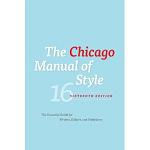Letter-by-Letter or Word-by-Word?
The two principal modes of alphabetizing – or sorting – indexes are the letter-by-letter and the word-by-word systems. Indexers must decide which mode to use before indexing begins. Dictionaries are arranged letter-by-letter, while library catalogs are arranged word-by-word. Most university presses, such as Chicago University Press, and many other publishers have traditionally preferred the letter-by-letter system; however, it may not be imposed on a well-prepared index arranged word-by-word.
Letter-by-letter system. In a letter-by-letter syetem, alphabetizing continues up to the first parenthesis or comma; it then starts again after the punctuation point. Word spaces and all other punctuation marks are ignored. Both open and hyphenated compounds such as New York or self-pity are treated as single words. The order of precedence is one word, word followed by a parenthesis, and word followed by a comma, number, or letters.
Word-by-word system. In the word-by-word system, alphabetizing continues only up to the end of the first word (counting hyphenated compounds as one word), using subsequent words only when additional headings begin with the same word. As in the letter-by-letter system, alphabetizing continues up to the first parenthesis or comma; it then starts after the punctuation point. The order of precedence is one word, word followed by a parenthesis, word followed by a comma, word followed by a space, and word followed by a comma, number, or letters.
For more information on arrangement of entries, refer to The Chicago Manual of Style. For more information about the services provided by the author of this blog, see the Stellar Searches LLC website, http://www.stellarsearches.com
